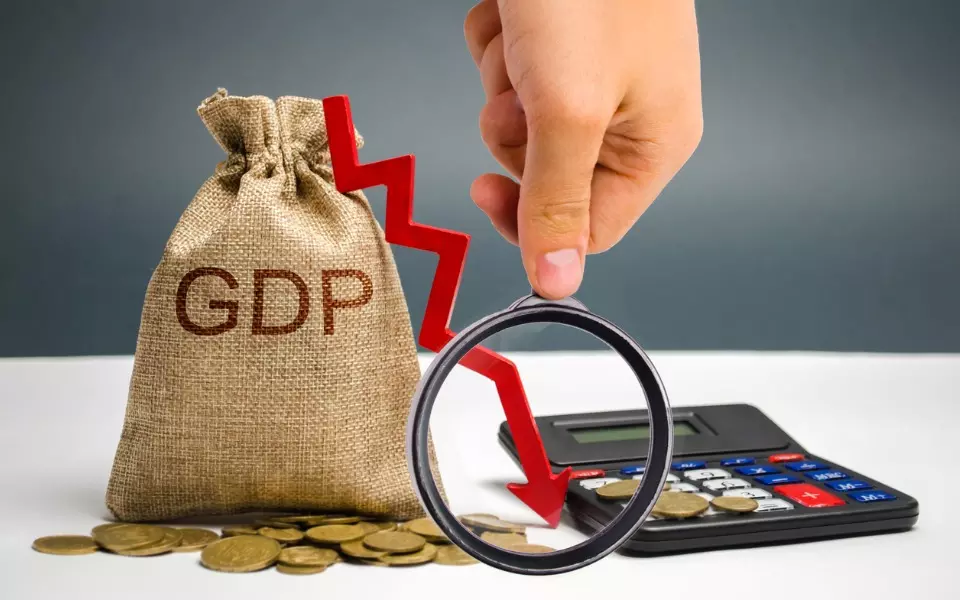
GDP growth likely to slow down due to global uncertainty and tariff war
Chief Economic Advisor V Anantha Nageswaran stated that global growth may decelerate in 2025 and 2026 due to rising global uncertainties but India may be less impacted

In the fourth quarter of the financial year 2024–25, the Indian economy surpassed most forecasts by growing at a rate of 7.4%. For the entire year, the GDP growth stood at 6.5%, in line with the second estimates released by the Ministry of Statistics and Program Implementation (MOSPI).
The agriculture and construction sectors showed impressive growth in the fourth quarter. But the key question now is: With current global turmoil and Trump’s tariff war in view, will India’s economic engine race ahead in FY 2025–26 or slow down?
Growth outlook in FY 2025-26
Chief Economic Advisor V Anantha Nageswaran commented on India’s economic outlook, stating that global growth may decelerate in 2025 and 2026 due to rising global uncertainties. However, India is likely to be less impacted.
Also read | Manufacturing pulls down Q4 GDP to 7.4 pc; FY25 growth to 6.5 pc: Govt data
He projected that the Indian economy would grow at 6.3% to 6.8% in 2025–26, supported by improvements in private consumption, especially in rural areas, and robust services exports. He noted that various institutions have estimated India’s growth to remain between 6.3% and 6.7%.
According to Nageswaran, April 2025 data indicates strong factory and trade activity. The Rabi crop was healthy, summer sowing recorded an increase, government procurement was strong, and the monsoon was better than normal, leading to lower food inflation. He added that India’s exports remain strong, and the country has foreign exchange reserves sufficient to cover 11 months of imports.
Declining oil prices bode well
He expressed satisfaction over declining crude oil prices, noting that falling oil prices would reduce India’s import bill, ease pressure on the government budget, and lessen external vulnerabilities. With central banks across the world pursuing divergent policies, capital flows and equity markets could be affected.
CareEdge Ratings’ Chief Economist Rajani Sinha reacted to the GDP data, stating that GDP growth in Q4 FY25 was 7.4%, much better than expected. The annual GDP growth of 6.5% is aligned with MOSPI’s second estimates. She noted that GVA growth stood at 6.8%, largely driven by manufacturing, construction, and financial services. Agricultural growth was positive, though slightly slower.
Weak urban consumption
Despite big-ticket events like Kumbh Mela, growth in trade, hotels, and transport services remained subdued, Sinha noted. Rural consumption remained strong, but urban consumption was weaker due to low wage growth. Recovery in construction and manufacturing matched expectations.
She added that the impact of strong spending in Q3 was visible in Q4, even though the government slightly reduced capital expenditure in Jan–Feb 2025. With good agricultural output, a favourable monsoon, and low inflation, rural demand is expected to remain steady, but urban demand remains a concern.
Also read | Moody's cuts India's GDP growth forecast to 6.3 pc in 2025 on US trade uncertainty
According to her, tax reliefs and RBI rate cuts could support demand. However, global uncertainty and US tariffs may impact private investments. She projected India’s GDP growth for FY26 at 6.2%.
Capex fuelling growth
Madhavi Arora, Chief Economist at Emkay Global, stated that the Q4 surge in growth was primarily driven by high government and state spending, especially on capital expenditure (Capex) for infrastructure.
While FY25 growth met government expectations, FY26 may face challenges due to global uncertainty and weakening urban incomes, which could impact investment and consumption. However, softer RBI interest rates and regulatory easing may offer some relief.
(This article was originally published in The Federal Desh)

